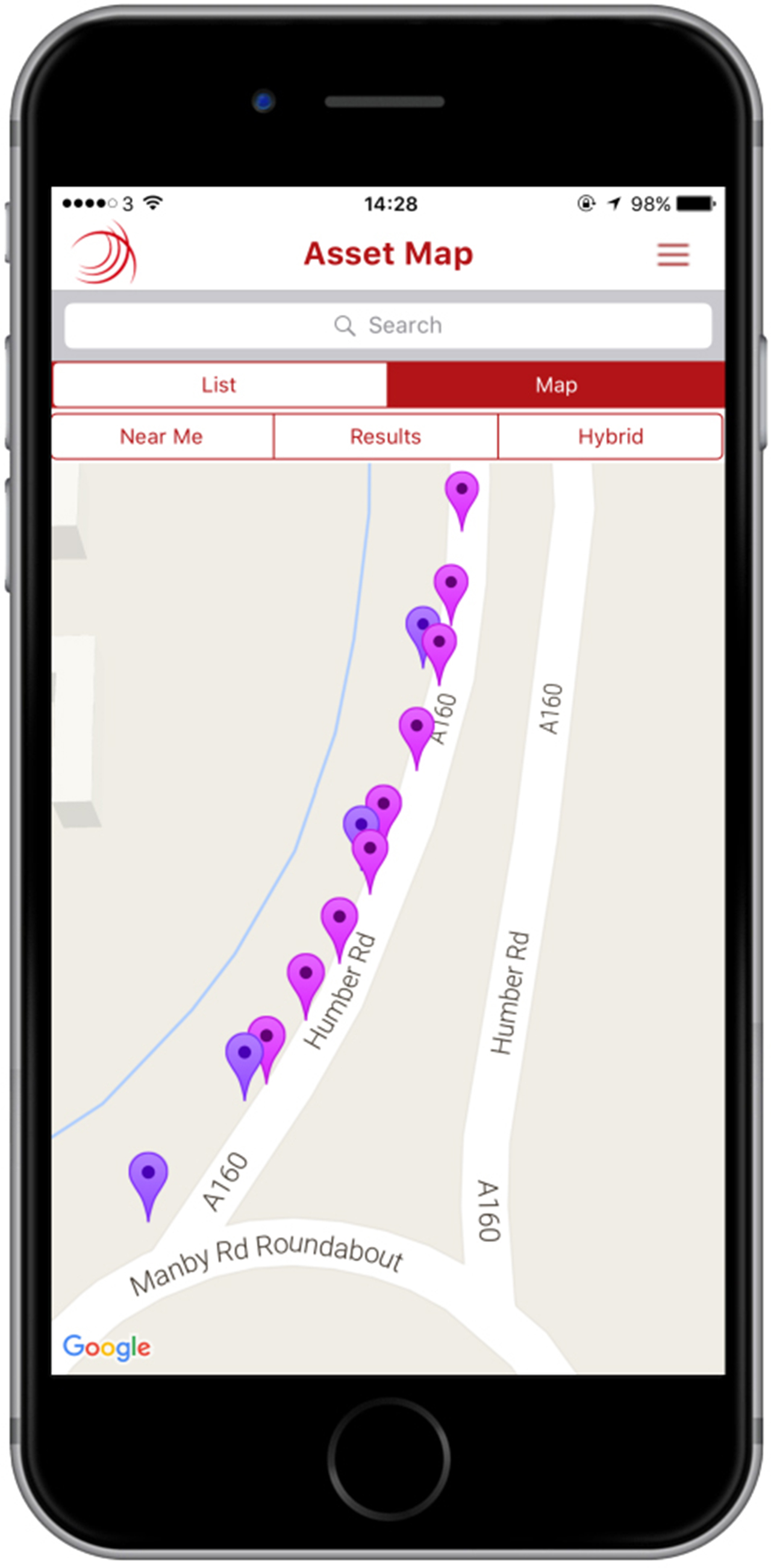Smartphone Innovation For Highways

25 April 2016
Costain is collaborating with RedBite Solutions Ltd, a Cambridge-based software company, in using a mobile asset management tool to tag and manage highways assets.
The tool, RedBite Asset, is a smartphone centred asset management programme which provides each asset with a tag, so that it can be uniquely identified and a unique page where all data relating to that asset is located. The technology is being trialled on the A160 Port of Immingham Improvement Scheme, which involves upgrading 5km of single carriageway into dual carriageway.
The tool incorporates Radio Frequency Identification (RFID) technology, Quick Response (QR) Codes and GPS tags to identify individual assets.
The pilot began in May 2015 led by Graham Starkey, the Building Information Modelling (BIM) Coordinator on the £88.4m project. The aim of the deployment is to test the suitability of tagging assets in a highways environment.
RFID involves the use of radio waves to convert and transmit information from an RFID tag to a digital device. The technology is commonly used to automatically detect the presence of an RFID tag attached to an object or person. A distinct advantage of RFID technology is that it does not require line-of-sight in order to be read and can be read at long distances.
QR codes are two-dimensional barcodes that require line-of-sight in order to be read but that can be read at any angle and can contain large amounts of information, unlike conventional barcodes. QR codes, significantly, can also be read by most smartphones.
“Managing and tagging assets using intelligent software has many benefits, not only in helping to locate and deploy equipment during the construction process but, more crucially, in monitoring an asset once it has been handed over to the customer,” said Graham.
Using such software provides access to full historical asset data while onsite and the ability to instantly add new information to create accurate, real-time asset records. In addition, asset owners can be alerted when faults are reported against particular assets and asset records can be viewed and edited by different parties in collaboration.
In terms of BIM, using RedBite’s asset management software gives operators access to a great range of information, or BIM data, in the field. The initial pilot will also help to establish what data is necessary, useful and deliverable to mobile workers, as well as answer questions about optimal positioning, installation methods and maintenance of the tag itself.
“BIM is so crucial to what we do and its deployment is now a prerequisite to winning work. The more information we can gather about a particular asset in the field will ultimately help the customer manage those assets,” said Graham.
As part of the project, the team agreed to tag existing assets between a stretch of the A160 between Brocklesby Interchange and the first (New Habrough) roundabout. The assets include lighting columns, signs, pavements, culverts and gullies. New assets will also be tagged where possible.
“We retro-fitted tags to some assets with the objective of establishing the optimal methodology for tagging the assets and estimating the potential cost of tagging assets across the existing highways network,” said Graham.
Looking to the future, there is no doubt the highways assets will be well used. Immingham and Grimsby Ports are the largest ports in the UK by tonnage, handling some 10% of the UK’s cargo market, while the South Humber Bank also contains 20% of the UK’s oil and gas refining capacity.
The A160 Improvement Scheme aims to improve road access to the Port of Immingham so that it meets the needs of the current traffic flows and the predicted growth in traffic resulting from planned and approved development of the Port.
“With such heavy usage on the assets, wear and tear is inevitable. By utilising and refining a system where we can record and maintain a large amount of data on a range of assets, we can potentially deliver huge benefits through increased accessibility to and accuracy of the state of those assets,” said Graham.
RedBite is a spin-out from the University of Cambridge and a member of the HyperCat Consortium, which is driving secure and interoperable Internet of Things (IoT) for industry. At its core, IoT is about connecting objects to the internet, letting them talk to us, applications and each other.
Daniel McGreal, Systems Architect at RedBite, added: “We are leading the HyperCat Smart Highways use case and are partnering with Costain in order to develop a practical understanding of the challenges and benefits of tagging assets on a busy highway”.
For more information about RedBite, please click here.
Caption: A snapshot of some of the GPS tagged assets on the A160 project. The pink ones are gullies and the purple ones are lighting columns.
Ends
Media Enquiries
Costain Communications Department
01628 842585
[email protected]
